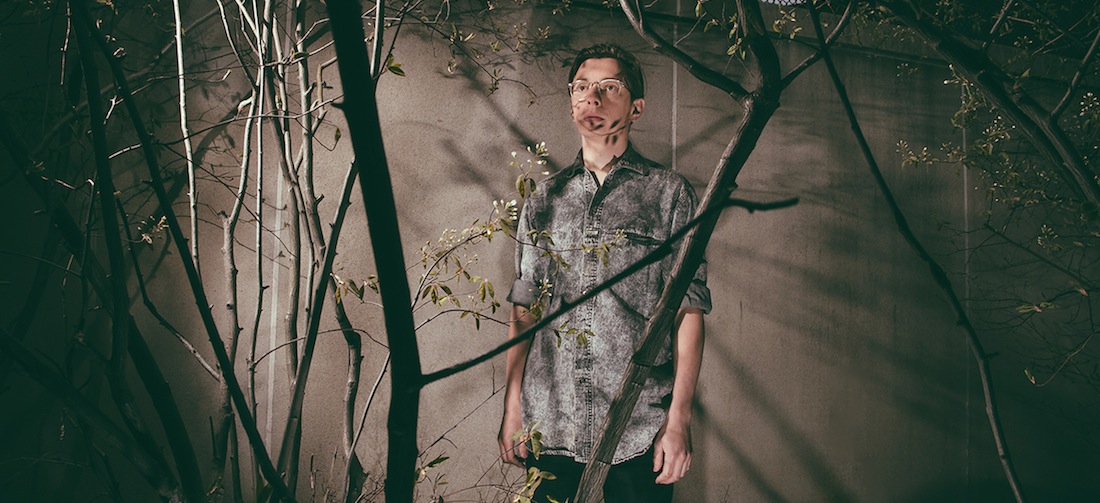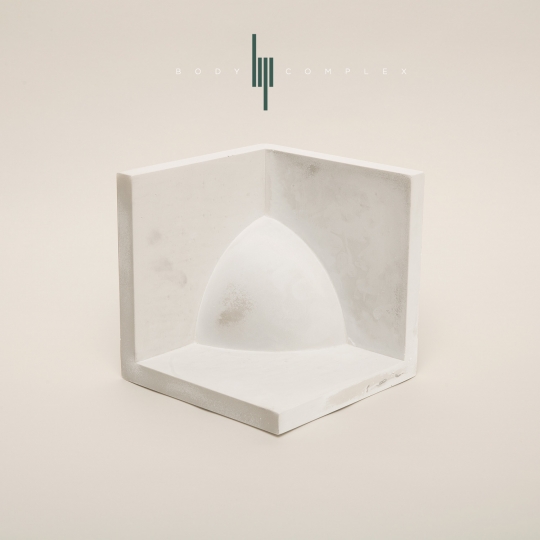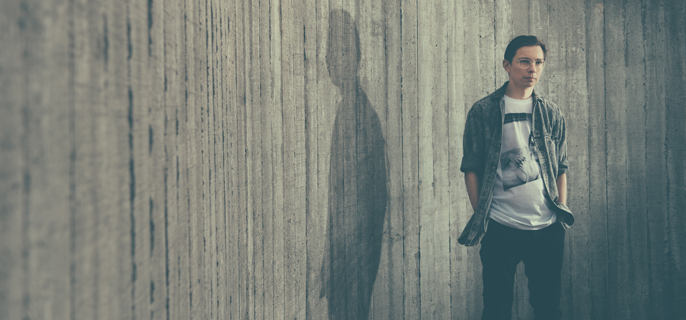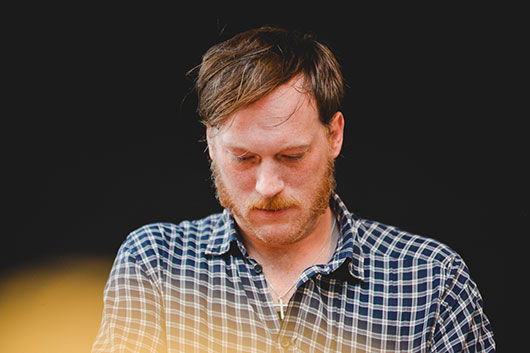Q&A: Heathered Pearls
With a new album on Ghostly International, Jakub Alexander ruminates on the power of repetition.

Q&A: Heathered Pearls
With a new album on Ghostly International, Jakub Alexander ruminates on the power of repetition.

“I’m always wanting to make music that I can play when I DJ,” Jakub Alexander, the producer better known as Heathered Pearls, says. “And I try. But people are always like, ‘Oh, your music is great! It’s so nice, so repetitive.’ I’m like, ‘Oh, thanks.…'” There’s a hint of exasperation in his voice, and you can’t really blame the Ghostly International recording artist: In the musical world, the term nice often refers to work that exists more for its decorative qualities than for its substance or depth. And while Heathered Pearls’ music is undeniably beautiful—he’s described the electronic ambience of his first album, Loyal, as “indirect, huge, heavy, slow ocean waves off in the distance at night”—there’s always been a bit more than prettiness at play in Alexander’s sound. Just maybe, underneath the placid shoals, there are roiling waters, an undercurrent that belies the serenity.
That vague sense of unease comes closer to the surface on the new Heathered Pearls album, Body Complex, just released on Ghostly. Alexander, who cofounded the Moodgadget label and curates Tycho‘s great ISO50 blog, has replaced some of Loyal’s shimmer with something a bit murkier, adding an layer of emotional resonance to the looped swells and drones. Still, Body Complex never strays far from the elegant beauty of Alexander’s best songs—this is spine-tingling music of the highest degree. As for music that he could use in his DJ sets—well, there are a number of tracks, “Sunken Living Area” and “Interior Architecture Software” among them, that could be thought of as “dance music,” albeit dance music of a particularly exquisite nature. “I think the next record might actually be more full-on,” the Poland-born, Detroit-area–raised, Brooklyn-based producer confides. Perhaps he will—but don’t expect Heathered Pearls to ever fully forgo the sumptuous refinement that’s gotten him to where he is.
What were your influences? I’ve heard you name-check labels like Dial and Mille Plateaux in the past.
Yes—and early on, Traum had some really good records, and I really liked stuff like Lawrence on Kompakt. I used to DJ with Ryan Elliott and Matthew Dear—this was around 2002—when we had a weekly at this weird place called Goodnight Gracie. Every Tuesday we would go out to Neptune Records, which was this very German-specific store in Royal Oak. It was very odd that there was a store with that kind of specialty round then, but I guess that was when those kinds of records could still sell like six or seven thousand. Anyway, I found myself getting into…I don’t want to say delicate, but the more melodic end of things. There was a lot of that kind of vibe back then, with people like Efdemin and Carsten Jost, and a bit later people like Pantha Du Prince, doing this really cool stuff.
The early-through-mid-’00s were a great time for that kind of pretty-techno material.
Definitely. Kompakt had a lot of the moodier, softer stuff as well. Those were the first things to really grab me after Detroit techno and the harder stuff that was around in the ’90s.
Do you feel that the Detroit techno or the harder stuff, has any bearing on the direction in the direction you took?
They might have been the things that kind of got me into electronic music. When I was really young, in the ’90s, I was getting those X-Mix compilations, and I loved them. But I wouldn’t say I’m really influenced by that—they certainly don’t sound anything like what I make. (laughs) It did open up the doors for everything else, like Dial and Traum, though.
You’ve said in the past that some of that music provided inspiration for your own “visions of interior architecture.” Could you elaborate on that a bit?
My mom’s an artist, and there was always a lot of art around me. I’ve always been into these kinds of minimal, DDR, cold war–design homes and installations. I was born in Poland and had been visiting communist Poland for a lot of my early life, and that kind of brutalism stuck with me—I never thought of it as this dark, stiff kind of architecture, though. I just liked it. And when I would daydream around music, or around designing stuff, it would always lean towards that sort of imagery.
Was that the inspiration behind the artwork on the album? You designed that, right?
Yes, that’s mine. I’ve always had the dream of building one of those minimal homes, but with what I’ve chosen for a lifestyle, I don’t see that happening. (laughs). I’ll never have a couple of million dollars. So the next best thing is to create miniature versions, or my own reinterpretation. I’m trying to take what living inside a brutalism-designed home would be like, and make it into something else. You know those people who have like train-station cities in their basement?

You mean model-train obsessives?
Yeah. I always imagine doing something like that—making my own little city of mini-cement homes, which are obviously not meant to be lived in, but are there within the landscape. And I’m lucky enough to be with Ghostly, and they give me a little bit of a budget for album-cover art, so I was able to do a design and have it made by someone. And I want to keep doing it, so this is a good way to start it off. I was actually thinking of doing a bunch of these things and make a cement sculpture garden. Not a Stonehenge—I’m not into anything like that—but just a place of my own.
A place where you can just relax?
Yeah.
Speaking of relaxing, you’ve described Heathered Pearls as a project that enables you to take a break from your personal anxieties.
Well, earplugs are very important to me now.
I guess you better explain that a bit.
When I was about 28, I went to a Gang Gang Dance show with my friend Ben Curtis, who has since passed away. We had had one beer, and I was standing right by the speaker when this high-pitched sound started coming out of it. I remember saying to Ben, “Man, I feel so drunk I can barely walk!” Ben was like, “We’ve had one beer. What are you talking about?” But something about that sound had just hit me. And when I woke up the next morning, the whole room was spinning. I got labyrinthitis, which is damage to the inner ear. There’s this gyroscope that helps you keep your balance, basically, and that got messed up. And ever since that show, for like five years now, I’ve felt like I’m on a boat.
Yikes.
My hearing is fine, but I always feel like I’m going to fall over. When I DJ, it can get really weird when the music gets intense, and I have to hold on to something. It took the doctors three years to figure out what was going on. And now I tell everybody to wear earplugs.

Well, that would explain the anxiety.
Before that happened, I was way more rowdy. Now I am riddled with anxiety. A lot of things can trigger it—but my music actually helps. With the first record I made, I was trying to mimic the feeling I had, using repetition to try and recreate what the ocean feels like, and what anxiety feels like.
I guess it’s surprising, then, that your music can sound so soothing.
Some people tell me it’s soothing—but some people tell me its really intense ambient music. Well, I never wanted the music to be minimalism, and I didn’t want it to sound like field-recording ambient, or sound too digital or dark. I just wanted to make something I could listen to on repeat, and those melodies on that first record are my favorite ones that I make back at that time.
What’s the Heathered Pearls production process like?
I’m mostly all Reason. Com Truise and Shigeto work that way, too. We sample into Reason, but then that’s the main tool. I use guitar pedals a little; I like to create really nice swells. I love the Space Echo, too— I only used it on one track, but I use it a lot when I play live. And I always want more pads—the deep, warm kind of pads. And the great thing about Reason is that the pad library is huge, and that’s really the main reason that I use it, I think. I love adjusting the pads through the VSTs that they have.
Repetition plays a large role in your music. What’s your theory on why repetition is such a powerful force?
I don’t know…but I know there is a lot of bad repetition. It’s hard to pin down exactly what makes good repetition good. But when I think of good repetition, I think of the kind of music I’d want to hear for 20 minutes, or for 45 minutes. I think of the the kind of music that someone like William Basinski might make, though I don’t know if I could explain why I like it. I actually have on a track on the last album, which is one four-second loop without one adjustment for six minutes. I think it’s the longest track on the album. I was just trying to prove the point that “this is my favorite loop, and I think it can go on forever.” Repetition is so important to me, but its hard to say why.
You just plain old enjoy it, maybe?
I do…but I want to try and tell you why I enjoy it. When I find a repetitive piece that I love, it’s a really special feeling. I guess I can’t really explain why I enjoy it so much.
Perhaps it’s simply the meditative nature of repetition.
The funny thing is, when I first started making music, I was like, “This is all meditative! Everything I make is meditative!” But people who I knew who were really into meditation said, “Well, usually people just meditate in silence. I don’t know what you’re talking about.” (laughs). But I think it is meditiative—though with my anxiety, I can never clear my head. So for all I know, maybe silence is more meditative than repetition for other people.

Are there any contemporaries who you feel a real affinity towards? I see you are playing with the Field in October, for instance.
Oh, man, yeah—when I do a remix, especially a remix of a band, I try to make it like a Field track. I don’t want to say this because it sounds so goofy, but it would be amazing to be considered the American version of the Field. He has a very specific way of sequencing samples that I can really relate to. Him and Terrence Dixon—my music isn’t nearly as digital or dark speedy as the stuff that Dixon does, but I love him. Those are the two guys…along with Markus Guentner. There are a bunch of other people, too, but we’ll just leave it at that.
Both of your albums have come out on Ghostly International, and you serve as the label’s A&R guy. A lot of people who have worked with Ghostly seem to have a real reverence for the label—do you feel the same way?
Yeah, I think so. Sam [Valenti IV, the head of Ghostly] is one of my best friends, and I just really believe in the label. When I met Sam, when I was maybe 20, I was just this guy doing these little events in Ann Arbor, and I started interning there full-time, for free. I dropped out of school! Ghostly isn’t this cooperate kind of thing—it’s a beautiful home for moody electronic music. And there’s a focus on design and art—Ghostly exposes all these great visual artists. It’s such a good home for me that I couldn’t even imagine leaving. And Sam keeps pushing forward, so why would I?

